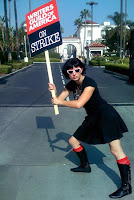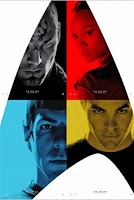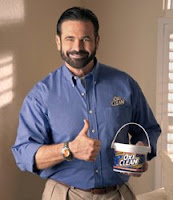 What is the line between utter satire and a nice homage? These two genres seem utterly different: either you’re honoring something, or making fun of something. Most filmmakers who try to do both in one movie usually fail except for one: Mel Brooks. Of all of his great satires, “Young Frankenstein” is one of Brooks’ best. It’s one of the sharpest, most brilliantl slapstick comedies he’s made.
What is the line between utter satire and a nice homage? These two genres seem utterly different: either you’re honoring something, or making fun of something. Most filmmakers who try to do both in one movie usually fail except for one: Mel Brooks. Of all of his great satires, “Young Frankenstein” is one of Brooks’ best. It’s one of the sharpest, most brilliantl slapstick comedies he’s made.
“Young Frankenstein” could be seen as a sequel to 1931′s “Frankenstein,” but just with more laughs. However, it is really a satire of “Frankenstein” and most other horror films. In addition, it’s a throwback to the films of the “Frankenstein” era.
“Young Frankenstein” is shot in a crisp black and white that makes it look almost exactly like a film shot in the 1930s. In fact, had I not known before, I would have thought the film was actually shot in 1931 rather than 1974. Everything in the movie creates a nostalgic feel. Just looking at the obviously fake castle in the background provides a good laugh but also oddly reminded me of the mansion in “Citizen Kane.” That’s when I realized this film really was a tribute.
The story of “Young Frankenstein” takes place long after the original Dr. Frankenstein, who was the subject of Mary Shelley’s “Frankenstein,” was conducting experiments in his lab. Here, we get the story Frankenstein’s grandson, Dr. Frederich Frankenstein (Gene Wilder). Frankenstein is so ashamed of his family’s past that he insist he be called “Frankensteen” in one of the film’s most memorable lines.
Frankenstein receives a notice that he has inherited his grandfather’s castle. He heads toward the castle and encounters a beautiful woman (Cloris Leachman), and a creepy hunchman with a good heart named Igor (Marty Feldman). But more importantly, he discovers his grandfather’s old experiments, including how to bring something dead back to life. Soon, Dr. Frankenstein goes from hiding his past to stating, “It’s not Frankensteen, it’s Frankenstein!” He becomes a mad scientist, bringing a corpse back to life with disastrous results (played by “Everybody Loves Raymond”‘s Peter Boyle). If you know the old tale, you know what happens next, but you’ve never seen it quite like this.
Many of the scenes from “Young Frankenstein” are exactly like scenes from “Frankenstein,” but with a comedic twist. Many are not meant to satirize but rather to entertain. For example, the scene mocking the monster and the little girl isn’t mocking “Frankenstein,” but more getting a laugh out of something serious. One more satirical point is when the brain clearly marked “abnormal” is put inside the new being.
Without the slightest doubt, I would say the funniest scene in the movie is the rotating bookcase scene. It is a scene of slapstick brilliance that almost matches up with the stateroom scene in “A Night at the Opera” in terms of over-the-top, slapstick ridiculousness. Like the stateroom scene, it uses repeated actions as a way to get laughs (in “Opera” it’s the dinner order and in “Frankenstein” its the amount of time the shelf rotates). But it’s that amount of time that builds up and up until everything will inevitably crash that makes it so funny. I’m guessing that, like most comedians, Brooks was inspired by the Marx Brothers. If so, he did them well.
Brooks is certainly one of the best comedic directors Hollywood has ever seen. Many have tried to mock cinema, but fail miserably (I’m talking to you, Seltzer/Friedberg). “Young Frankenstein” does to the horror genre what “Spaceballs” did to the sci-fi genre, what “The Producers” to the musical genre, and what “Blazing Saddles” to the western genre. Like “Blazing Saddles” and “History of the World,” “Young Frankenstein” is much more than mere satire–it is a tribute to filmmaking as a whole just as “History of the World” was not just a satirization of historical events, but of religion and musicals and that “Blazing Saddles” was not just satirizing westerns, but also the ridiculousness that goes behind racial tensions.
The film was written by both Brooks and Wilder. The writing is always superb, but it is often the visual humor that gets the best laughs such as the aforementioned book case scene and another scene with a blind man (played by an unrecognizable Gene Hackman). Surprisingly, the film’s humor is not as dirty as many other of Brooks’ productions and that helps make it seem even more like a film that could belong in the golden days of Hollywood.
Wilder serves great as one of the film’s writers, but all credit should go to his fantastic performance. He makes the descent into madness hilarious and masters the art of weirdness mixed with an air of superiority (also see: “Willy Wonka and the Chocolate Factory”). The Academy rarely gives serious thought to nominating comedic performances but if they did, this one would have been a shoo-in.
“Young Frankenstein” somehow manages to go deeper than “Frankenstein.” In fact, “Frankenstein” totally stripped the Enlightenment philosophy that the book contained. “Young Frankenstein” at least acknowledges it, and even tries to put its own message in about the debate of nature vs. nurture and the writings of John Locke. I know, this sounds too deep for a comedy to go. But comedy can go this deep, and be this intellectual. It depends on the right filmmaker, the right writing, and the right actors. In this case, “Young Frankenstein” has it all.
Recommended for Fans of: Frankenstein, Blazing Saddles, History of the World: Part 1, Spaceballs, A Night at the Opera, Duck Soup, King Kong (1933), Tropic Thunder
 John Dillinger was an interesting character. Among names like Al Capone and Bonnie and Clyde, Dillinger was one of the great criminals and anti-heroes of the Great Depression. He robbed banks with style. Too bad this personality is lost in the new film about his robbing days, “Public Enemies.”
John Dillinger was an interesting character. Among names like Al Capone and Bonnie and Clyde, Dillinger was one of the great criminals and anti-heroes of the Great Depression. He robbed banks with style. Too bad this personality is lost in the new film about his robbing days, “Public Enemies.”
 Normally, I wouldn’t be too interested in a movie like “Jennifer’s Body.” Frankly, “Twilight” has made me sick of all things that have to do with teen horror films. But “Jennifer’s Body” has one thing that sets it apart from your average teen flick: Diablo Cody.
Normally, I wouldn’t be too interested in a movie like “Jennifer’s Body.” Frankly, “Twilight” has made me sick of all things that have to do with teen horror films. But “Jennifer’s Body” has one thing that sets it apart from your average teen flick: Diablo Cody.
 “Greed, for lack of a better word, is good.”
“Greed, for lack of a better word, is good.”
 Sarah Palin+Resignation=1,000,000,000 late night jokes disappearing
Sarah Palin+Resignation=1,000,000,000 late night jokes disappearing
 Off the heals of the deaths of Ed McMahon, Farrah Fawcett, Michael Jackson, and Billy Mays, Hollywood lost another one of its finest. Karl Malden, an Oscar and Emmy winning actor died today of natural causes. He was 97.
Off the heals of the deaths of Ed McMahon, Farrah Fawcett, Michael Jackson, and Billy Mays, Hollywood lost another one of its finest. Karl Malden, an Oscar and Emmy winning actor died today of natural causes. He was 97.
 Today, I give a shout out to all of my Canadian readers (no matter how few they are) on Canada Day. Why must I mention Canada Day and what does it have to do with entertainment? Quite simply, Canada has given the world some of our greatest actors, comedians, and performers. Want proof? Here’s some great people Canada has given us:
Today, I give a shout out to all of my Canadian readers (no matter how few they are) on Canada Day. Why must I mention Canada Day and what does it have to do with entertainment? Quite simply, Canada has given the world some of our greatest actors, comedians, and performers. Want proof? Here’s some great people Canada has given us:
 In the year 2009, the Enterprise was reborn, with stunning special effects and a great story line. 2009 marks the triumphant return of “Star Trek.”
In the year 2009, the Enterprise was reborn, with stunning special effects and a great story line. 2009 marks the triumphant return of “Star Trek.”
 Of all the characters I’ve ever been acquainted with, perhaps the most odd, eccentric, and engrossing is Harry Powell (Robert Mitchum). This mystery of a man is the subject of Charles Laughton’s mesmerizing “The Night of the Hunter.”
Of all the characters I’ve ever been acquainted with, perhaps the most odd, eccentric, and engrossing is Harry Powell (Robert Mitchum). This mystery of a man is the subject of Charles Laughton’s mesmerizing “The Night of the Hunter.”
 What is the line between utter satire and a nice homage? These two genres seem utterly different: either you’re honoring something, or making fun of something. Most filmmakers who try to do both in one movie usually fail except for one: Mel Brooks. Of all of his great satires, “Young Frankenstein” is one of Brooks’ best. It’s one of the sharpest, most brilliantl slapstick comedies he’s made.
What is the line between utter satire and a nice homage? These two genres seem utterly different: either you’re honoring something, or making fun of something. Most filmmakers who try to do both in one movie usually fail except for one: Mel Brooks. Of all of his great satires, “Young Frankenstein” is one of Brooks’ best. It’s one of the sharpest, most brilliantl slapstick comedies he’s made.

